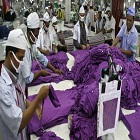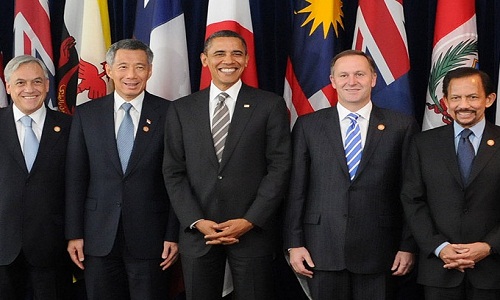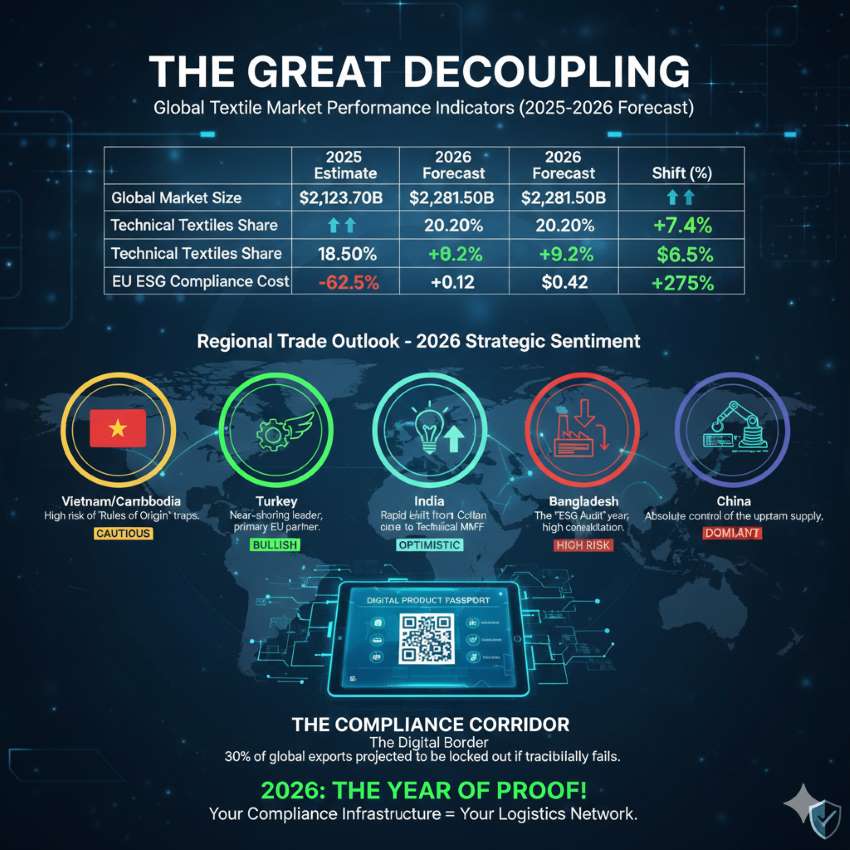FW
Foreign Direct Investments (FDI) to Rwanda have increased by 78.1 per cent in 2014 from 2013. Mauritius investments in Rwanda are leading with 113.5 million dollars followed by Switzerland. The United States of America and Luxembourg come on third and fourth positions.
For the last seven years (2009-2014), a total of 338 investment projects fully owned by foreign investors or in joint ventures with local investment have been registered with a pledged investment value of 2,607 million dollars and planning to create 55,141 jobs.
In 338 pledged projects, 211 are operational, 69 are in implementation phase, and 32 have closed, while 36 remain committed to start their activities.
The performance is attributed to several reforms in doing business including a tax holiday of up to seven years, government’s protection of investments, settlement of disputes, transfer of funds and special economic zone facilitations.
The major profitable sectors are finance and insurance specifically in the banking sector, manufacturing and agriculture.
In 2015-2016 Rwanda improved its world ranking in ease of doing business to 46th position in the world, up from 48th the previous year. In Africa, Rwanda retained the third position and number one in the East African Community.
China is upgrading the textile sector in Pakistan.
China is already running a training program for its unskilled people, which would be replicated in Pakistan. Chinese companies will train Pakistani laborers in various industrial disciplines. Under this plan, various universities would be linked up with industrial sectors.
An apparel park is coming up in Pakistan. The Quaid-e-Azam apparel park is expected to generate an additional two lakh jobs. There is a vast possibility of Chinese investment in the Quaid-e-Azam apparel park, which would lead to the need of skilled labor, possessing knowledge of Chinese work ethics.
China is collaborating on several other parks in Pakistan.
The apparel park in Punjab province has been declared a Special Economic Zone. The apparel park is a state of the art project which is being constructed on 1,536 acres of land. Construction is underway at a fast pace.
The setting up of the textile park would promote the development of the textile sector in the region, while also strengthening the national economy. The construction of the textile park would also mean that Pakistan would be availing of the benefit of modern technology and technical skills that are currently practiced in the Chinese textile sector. It would also contribute to enhancing Pakistan’s exports.
South Korea’s exports may rebound in the second half of the year from a falling streak that has lasted more than a year. Recovery in advanced economies and rising global oil prices will help.
Exports from July to December are likely to grow 0.9 per cent from a year earlier compared with an estimated 10.1 per cent drop for the first half of the year.
Shipments have been on a steady decline since January last year on sliding commodity prices, a slowdown in growth in China and a sluggish global economy.
While exports of display components, machinery, semiconductors and textiles will see improvement , those of ships, smart phones and cars are unlikely to notch sharp rebounds anytime soon.
Meanwhile, monetary policy tightening in the United States and accelerated competition from emerging economies remain downside risks for Asia’s fourth-largest economy.
Exports dropped at a faster-than-expected pace of six per cent in May and are likely to be worse this month as 20-day exports notched a 12.8 per cent fall.
South Korea has an export oriented economy and its exports accounts for more than 50 per cent of GDP. Major export partners are China, the United States, Hong Kong, Vietnam, Japan and Singapore. Others include India, Taiwan, Mexico, Australia, Saudi Arabia and Philippines.
London Technology Week is Europe’s largest festival of technology, convening with leading figures from the technology and wider business community and focusing on London as a tech hub. The event runs through June 26.
The world's first holographic intelligent mannequin has gone on display in the UK as part of a fashion exhibition taking place during London Technology Week.
The 3D virtual mannequin features a holographic head atop a physical body. Additional exhibits include a 3D printed wearable garment and a Bruise Suit developed by London's Royal College of Art. It detects internal injuries in the body and is meant for athletes.
Also on display is InMoov Robot, a fashion/tech interactive robot dressed in a piece of clothing and projected onto with animated fashion imagery, and a series of men's sensor-enabled sports jackets by Infi-Tex clothing that allow the wearer to play music through sensors on their clothes.
From fashion start-ups, 3D printing and social media, to improving in-store customer experience, brands in London have been leading the way in how to incorporate the latest tech advances into their fashion message.
A behind-the-scenes look at London Fashion Week using 360 degree video and content curated by creative communications agency Village also stars in the show.
Apparel Textile Sourcing Expo will be held in Canada, August 22 to 24, 2016.This will be Canada’s first apparel and textile trade show. Garment factories and fabric mills from around the world will be present.
Canada has needed a trade show where apparel and textile importers and retailers can learn about sourcing best practices while meeting international producers from around the world. The event offers an important new resource for its domestic market.
The expo will give Canadian retailers and manufacturers access to apparel and textile manufacturers from China, India, Bangladesh, Mexico, the USA, Taiwan, Vietnam, Indonesia, Mauritius, Colombia, Guatemala, Honduras, Jordan, Peru and Myanmar.
In addition to the exhibition floor, the expo will feature a slate of seminars covering issues such as the Trans-Pacific Partnership, industry best practices, the changing Canadian market and sourcing tips.
The Canadian Apparel Textile Sourcing Expo hopes to become an efficient and convenient trade platform for the global textile and apparel industry. It is expected to fill a void in the market.
Companies looking to better monitor their offshore production will want to attend the show. It connects buyers with manufacturers of apparel, textiles, garments, fashion accessories, and home textiles from around the world.
On May 25, 2016, the Federation of the European Sporting Goods Industry (FESI) organised its first European Winter Summit at Flanders’ Bike Valley.
Key players of the winter sport industry gathered to discuss the main challenges and possible solutions for the sector in order to effectively enhance participation in winter sport activities.
Generally, the attractiveness of winter sports is dwindling and there is a clear need to build drivers for the attractiveness of winter sport activity.
Participants agreed that such a holistic approach calls for the set-up of a multi-stakeholder platform, involving all the main stakeholders active in winter sports and willing to work on solutions.
Several initiatives were presented from which the winter sector can profit, including a number of EU funding programs such as COSME; Horizon 2020, Erasmus + Education training youth, European Structural and Investment Funds and the European Fund for Strategic Investments.
The event agreed to formalize the winter summit concept and invite more stakeholders around the table to maximise cooperation.
To develop long-term strategies, another meeting will be held in 2017. This will strengthen the alliance by developing the required multi-stakeholder platform.
Common winter sports include skiing, snowboarding, figure skating, luge, bobsleigh, curling, snowmobiling and ice hockey.
White Women's Pre-Collections + Menswear was held in Milan, Italy, June 18 to 20, 2016. Foreign buyers also grew 20 per cent especially from the Far East. Japan showed a 18 per cent growth and China 15 per cent. The visitor number from the US also increased by 13 per cent and that from Russia rose by 26 per cent.
The show presented 250 brands (185 were women's pre-collections) that attracted over 6000 buyers, of whom 20 per cent were foreign buyers and 13 per cent Italian buyers.
Top buyers visiting this edition were H Lorenzo (Los Angeles), Need Supply (Richmond), Hotoveli (New York), Gallerie Lafayette (Paris), Isetan and United Arrows (Tokyo), The Cartel (Dubai), Margreeth Olsthoorn (Rotterdam), Sprmrkt (Amsterdam) and Bosco Dei Ciliegi (Moscow).
The special exhibition Denim R-Evolution curated by Don The Fuller brand presented the last 30 years of the history of jeans as seen through different treatments developed for the well-known indigo denim garment. Since 2010 jeans started their ecological era when the industry introduced eco-friendly denim without damaging its image. That was the beginning of an era of eco-friendly sand treatments, Oeko-Tex ageing and zero water washes.
Twelve Northern European brands like Wood Wood, Uniform For The Dedicated and Henrik Vibskov participated.
www.modemonline.com/.../3432-white-womens-pre-collections--mensw...
Belgium is investing in Vietnam’s textile industry.
Vietnam’s participation in free trade agreements has spurred on an increase in foreign investment in the textile industry. Seeing the potential of Vietnam’s textile market, several big foreign shoemakers have been shifting production to Vietnam.
Europlasma is just one of 15 leading Belgian tech firms with textile solutions that have come to Vietnam, in the hope of seeking co-operation opportunities while learning more about the demands of Vietnam’s textile market. As the EU-Vietnam free trade agreement takes effect, businesses from both countries will benefit from this agreement.
Europlasma is presenting its nano-coating solution to Vietnamese textile firms. One of its latest technologies is a solution for durable water repellent treatment for sporting goods. Europlasma has come to Vietnam to introduce its products to local textile and apparel enterprises.
International co-operation is needed to support Vietnam to raise its fabric production capacity to meet trade deal requirements, specifically, the yarn forward rule of origin under the TPP and the fabric forward rule of origin under the EU-Vietnam free trade agreement.
Belgium is the sixth European trade partner of Vietnam. The trade volume is increasing every year. Traded goods are mainly chemicals, machines, iron, textile and shoes, and agricultural products.
"The United States Fashion Industry Association (USFIA) has released the third annual Fashion Industry Benchmarking Study, a survey of 30 executives from leading fashion and apparel brands, retailers, importers, and wholesalers. Conducted in conjunction with Sheng Lu, Assistant Professor at University of Delaware Department of Fashion & Apparel Studies, the survey asked respondents about the business outlook, sourcing practices, utilisation of Free Trade Agreements (FTAs) and preference programs, and views on trade policy. "

The United States Fashion Industry Association (USFIA) has released the third annual Fashion Industry Benchmarking Study, a survey of 30 executives from leading fashion and apparel brands, retailers, importers, and wholesalers. Conducted in conjunction with Sheng Lu, Assistant Professor at University of Delaware Department of Fashion & Apparel Studies, the survey asked respondents about the business outlook, sourcing practices, utilisation of Free Trade Agreements (FTAs) and preference programs, and views on trade policy.
Business outlook

The survey reveals despite challenges like the intense pressure on retailers to remain relevant and uncertainty in US politics, the majority of respondents (92 per cent) are optimistic about the five-year outlook for the US fashion industry - a record high since conducting the study in 2014. Industry executives rank ‘market competition in the United States’ as their top business challenge, this year. For the first time since 2014, the concern about competition exceeds concern about ‘increasing production or sourcing cost.
Sourcing practices
US fashion companies are more actively seeking alternatives to ‘Made in China’ in 2016, but China’s position as the No.1 sourcing destination seems unlikely to change anytime soon. Meanwhile, sourcing from Vietnam and Bangladesh may continue to grow over the next two years, but at a slower pace. US fashion companies continue to expand their global reach and maintain truly global supply chains. Respondents’ sourcing bases continue to expand, and more countries are considered potential sourcing destinations. However, some companies plan to consolidate their sourcing bases in the next two years to strengthen key supplier relationships and improve efficiency. Ethical sourcing and sustainability are given more weight in U.S. fashion companies’ sourcing decisions, today. Respondents also see unmet compliance (factory, social and/or environmental) standards as the top supply chain risk.
Trade policy
US fashion companies are excited about the conclusion of the Trans-Pacific Partnership (TPP) negotiations and they look forward to exploring the benefits after TPP’s implementation. Thanks to the 10-year extension of the African Growth and Opportunity Act (AGOA), US fashion companies have shown more interest in sourcing from the region. In particular, most respondents see the “third-country fabric” provision a critical necessity for their company to source in the AGOA region.
Utilisation of trade agreements
Free trade agreements (FTAs) and trade preference programs remain underutilized in 2016 and several FTAs, including NAFTA and CAFTA-DR, are utilized even less than in previous years. U.S. fashion companies also call for further removal of trade barriers, including restrictive rules of origin and remaining high tariffs.
USFIA have additional new findings this year, focusing on the outlook for growth in Vietnam as they prepare for the implementation of the Trans-Pacific Partnership, specifics on how ethical sourcing and sustainability factor into sourcing decisions, and even whether companies are considering new, buzz-worthy destinations like Myanmar and Cuba for sourcing.
The study was conducted between March and April 2016 based on a survey of a survey of 30 executives from leading US fashion and apparel brands, retailers, importers, and wholesalers. In terms of business size, 92 per cent of respondents report having more than 500 employees in their companies, while 84 percent of respondents report having more than 1,000 employees, suggesting that the findings well reflect the views of the most influential players in the U.S. fashion industry.
The World Trade Organisation (WTO) has asked the G20 economies to lead by example in the fight against protectionism by rejecting new trade-restrictive measures and rolling back existing ones. Protectionist and trade restrictive measures by G20 countries touched a new high between mid-October last year and mid-May this year, the WTO has observed.
G20 economies applied 145 new trade-restrictive measures, equating to an average of almost 21 per month, a significant increase over the 17 per month recorded in the previous reporting period. "This is the highest monthly average registered since the beginning of the monitoring exercise in 2009, which helps explain that the overall stockpile of restrictive measures introduced by G20 economies grew by 10% during the review period," the WTO said in its report that was released last Tuesday.
The main factor behind the rise in trade-restrictive measures was an increase in the number of trade remedy investigations by G20 economies. Anti-dumping actions account for the majority of restrictive measures imposed, with most of the investigations concentrated in sectors such as metals (particularly steel) and chemicals. G20 members also imposed more distortive measures in the form of government support for sectors such as infrastructure, agriculture and export-specific activities.
Terming this trend "worrying", WTO Director General Roberto Azevedo reportedly said, "A rise in trade restrictions is the last thing the global economy needs today, with GDP growth sluggish and 2016 expected to be the fifth year in a row that trade has expanded by less than 3%". Of the 1,583 trade-restrictive measures, including trade remedies, recorded for G20 economies since 2008 by this exercise, only 387 had been removed by mid-May 2016. The total number of restrictive measures still in place now stands at 1,196. These trade-restrictive measures, combined with a notable rise in anti-trade rhetoric, could have a further chilling effect on trade flows since the prospects for world trade in 2016 and beyond remain uncertain. The recent WTO trade forecast predicted merchandise trade volume growth of 2.8% in 2016, unchanged from 2015.
The organisation noted that although some G20 economies have been eliminating trade restrictions, the rate by which this is done remains too low to dent the stockpile of such measures. Of the total number of trade-restrictive measures recorded for G20 economies since 2008, the share of eliminations, or roll-back, make up less than 25% whereas the restrictions cover over 6% of all G20 imports and 5% of global imports. The report also found that during the reporting period a total of 100 measures aimed at facilitating trade were taken—a monthly average of 14 measures. According to the organization, this represents an increase compared to the previous reporting period, but remains below the average trend observed since 2010.












